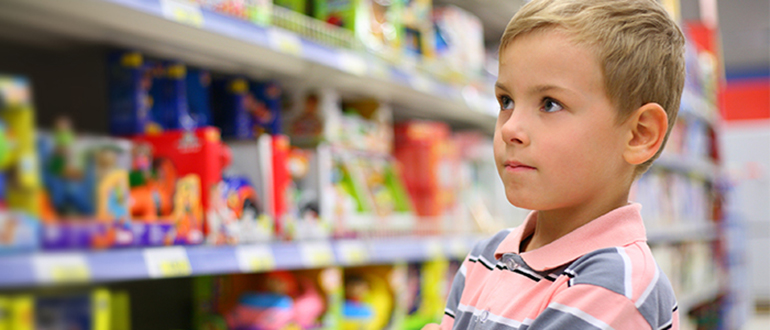Warning! The Effectiveness of Labels on Products May Surprise You

26 Apr 2017
Why manufacturers should incorporate foreseeable use into children's products
When consumers step inside any sort of store, they are faced with seemingly endless aisles of merchandise that would appeal to children of all age ranges. So how do most consumers decide which children's product to buy? A Caregiver Vigilance Survey conducted by Intertek looked at caregiver's considerations when purchasing toys for children and found that most people typically focus on finding products that suit the child's preferences, making product appeal an essential component of children's products.1
Many children's products contain warning labels intended to comply with regulatory standards and warn consumers of the potential hazards associated with the item. For example, the small parts warning label is used to communicate a potential choking hazard that may exist with some component of the product. The label would indicate that the product should not be used for children under 3 years of age, based on the knowledge that children between the ages of 0-3 years are most at risk for putting objects in their mouths, or mouthing. While mouthing behavior is the way children learn about their environment, it could also lead to them choking, inhaling, or swallowing something they place inside their mouth.
Even though the warning may convey to the consumer that the product is not appropriate for children under 3 years of age, that does not mean it won't still come into contact with a child in that range. While warning labels may appeal to some consumers and sway them from buying an item not intended for the age of the child they are purchasing for, not everyone is going to take the information into consideration. It is possible that they either do not see the warning label, do not know to look for it, or may overestimate the skills and abilities of the child they are shopping for. They may think that their 2-year-old child is more developmentally advanced than the average 2-year-old and therefore wouldn't place the item in their mouth.
Instead relying solely on warning labels to protect against the hazard, consider the foreseeable uses of the product as early as the design phase. By understanding the ways in which children of various age ranges are going to realistically use a product, which may differ from the intended use of the product, you can outline the hazards associated with the item as well as the ways in which to mitigate against them. If a product is not intended for children 0-3 years old, but has characteristics that would make it especially appealing to that age group, it would be important to design out any potential choking hazards. That could include making the item larger than a child's airway or including holes that would allow for breathing if swallowed. Overall, by taking the foreseeable uses of an item into consideration, instead of simply relying on a warning label that may not always be effective, products can be made safer for children of all ages.
1Intertek-RAM Caregiver Vigilance Survey 2002 & 2003: Warning Label: Consumer Attitude
